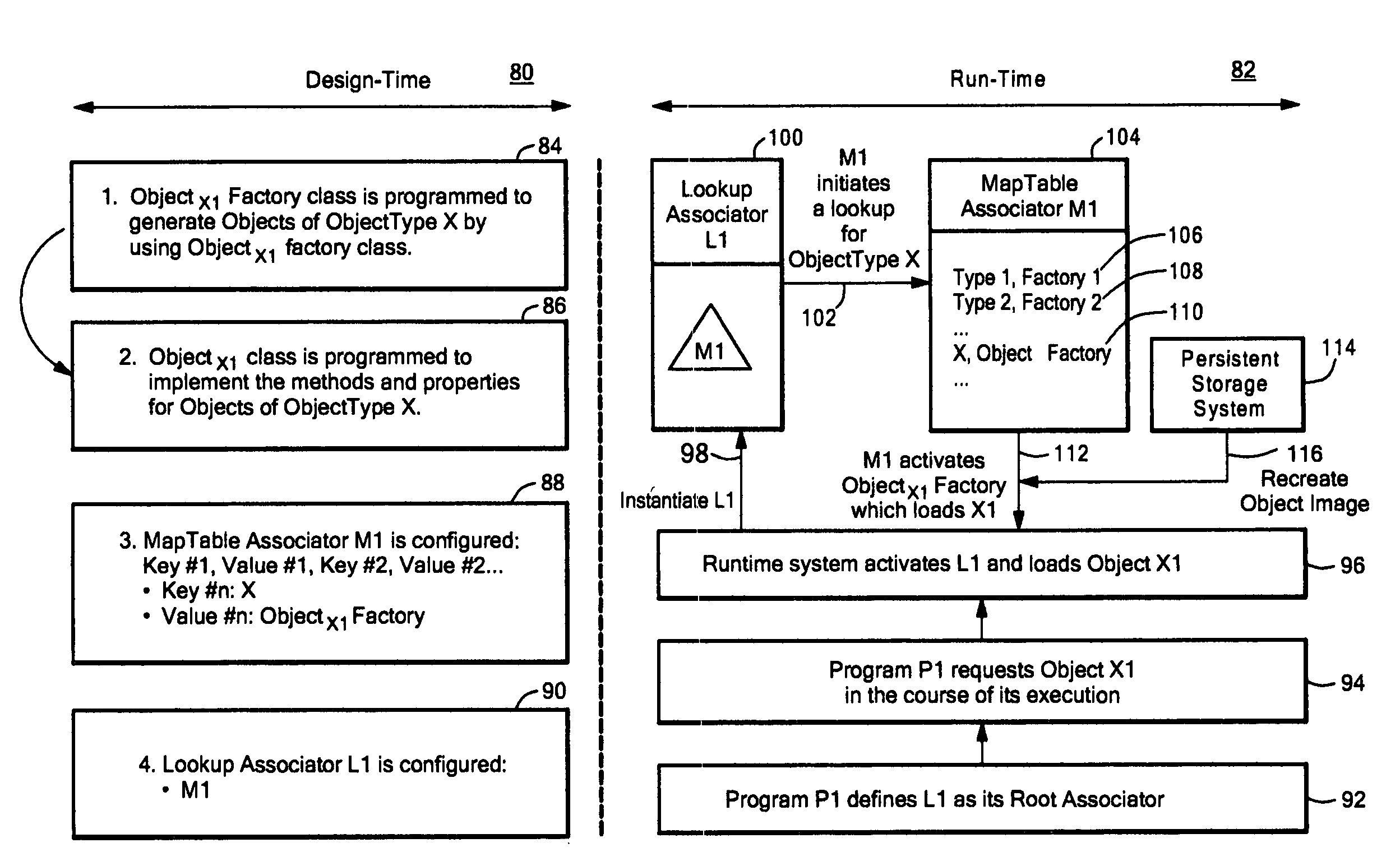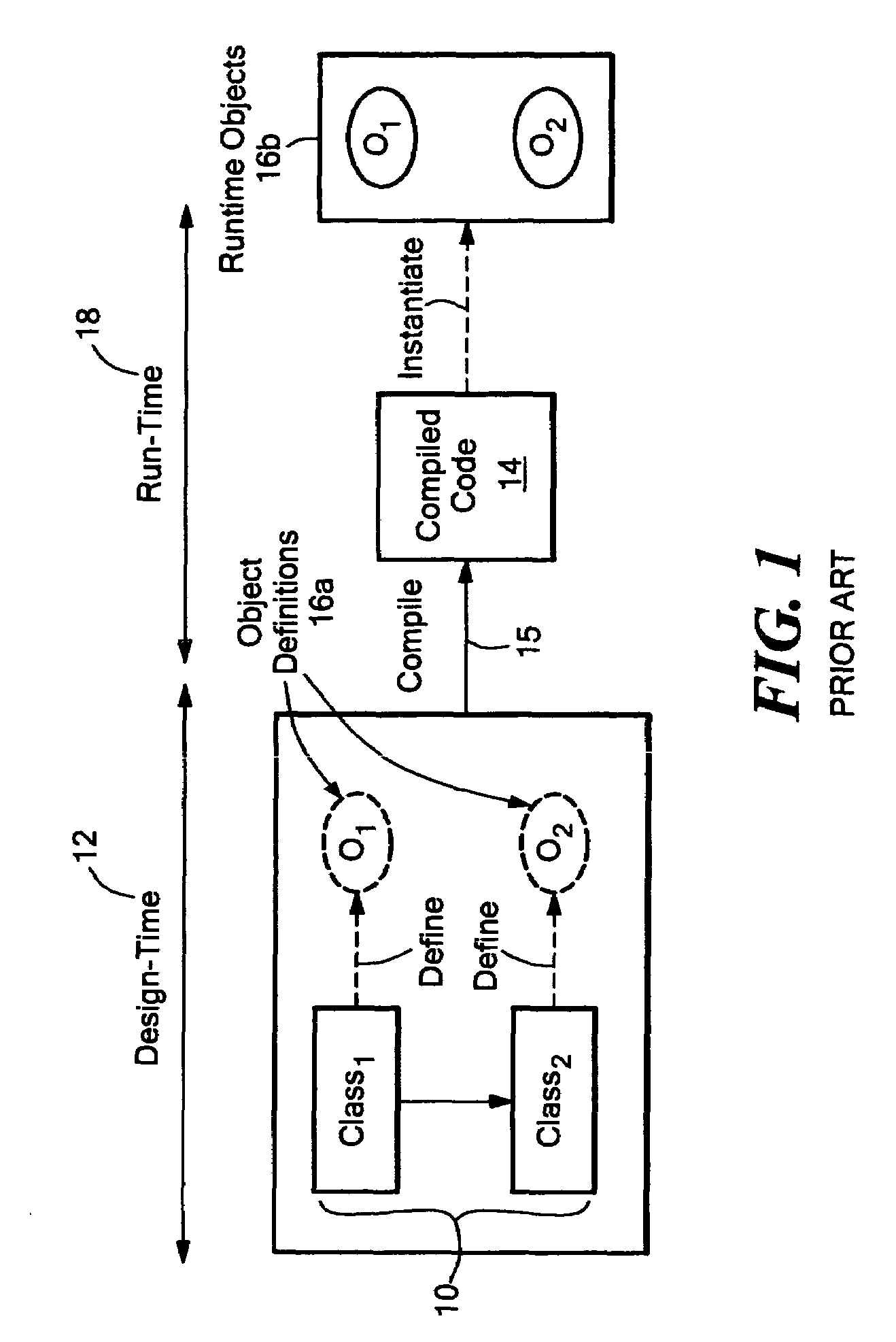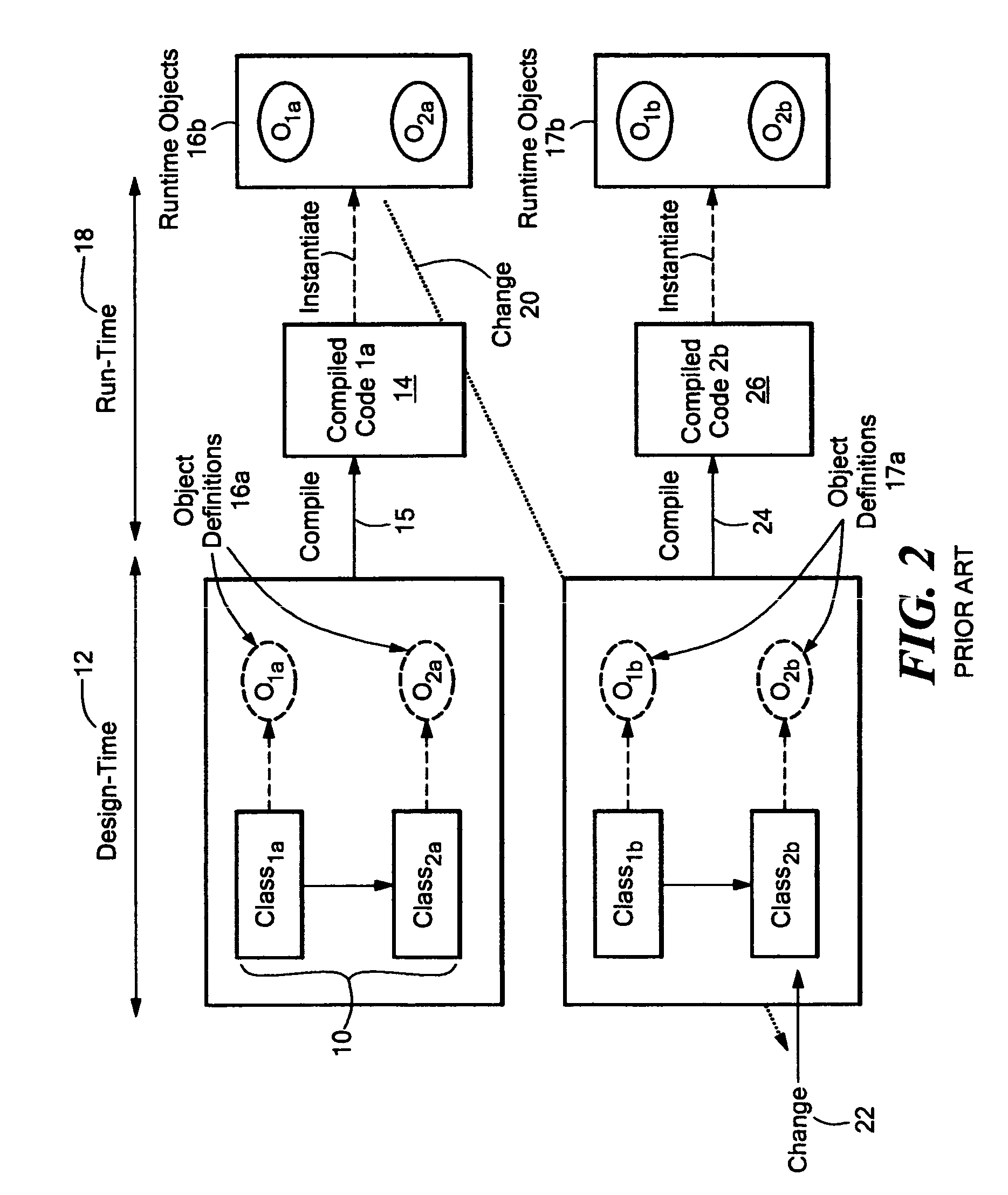System and method for dynamic late-binding of persistent object implementations in software-based systems
a software-based system and persistent object technology, applied in the field of software-based systems, can solve the problems of software-based system complexity, complexity has increasingly degraded the overall quality, performance, predictability and manageability of the system, and the complexity of the software-based system is considered to be one of the most complex artifacts developed and managed by mankind, so as to avoid the potentially combinatorial impact of changes, unlock new economies of scale for the goods, and increase the complexity of the overall software-based
- Summary
- Abstract
- Description
- Claims
- Application Information
AI Technical Summary
Benefits of technology
Problems solved by technology
Method used
Image
Examples
Embodiment Construction
[0035]As shown in FIG. 5, in an illustrative embodiment, the disclosed system may be described in terms of actions performed during software Design-Time 80 and software run time 82. Software Design-Time 80 may be considered the time period during which a software-based system is designed and / or developed, while software run time 82 may be considered the time period after the resulting software based system has been deployed, and has begun execution with regard to an intended application. Using this terminology, steps taken to perform “object definition” occur during Design-Time 80. These steps create built-in building blocks that provide architects and developers of software-based systems with the ability to design and develop persistent objects in a way that enables dynamic-late binding.
[0036]As further shown in FIG. 5, the run time period 82 involves the use of software objects referred to for purposes of explanation as MapTable Associators, (such as MapTable Associator M1104), Lo...
PUM
 Login to View More
Login to View More Abstract
Description
Claims
Application Information
 Login to View More
Login to View More - R&D
- Intellectual Property
- Life Sciences
- Materials
- Tech Scout
- Unparalleled Data Quality
- Higher Quality Content
- 60% Fewer Hallucinations
Browse by: Latest US Patents, China's latest patents, Technical Efficacy Thesaurus, Application Domain, Technology Topic, Popular Technical Reports.
© 2025 PatSnap. All rights reserved.Legal|Privacy policy|Modern Slavery Act Transparency Statement|Sitemap|About US| Contact US: help@patsnap.com



